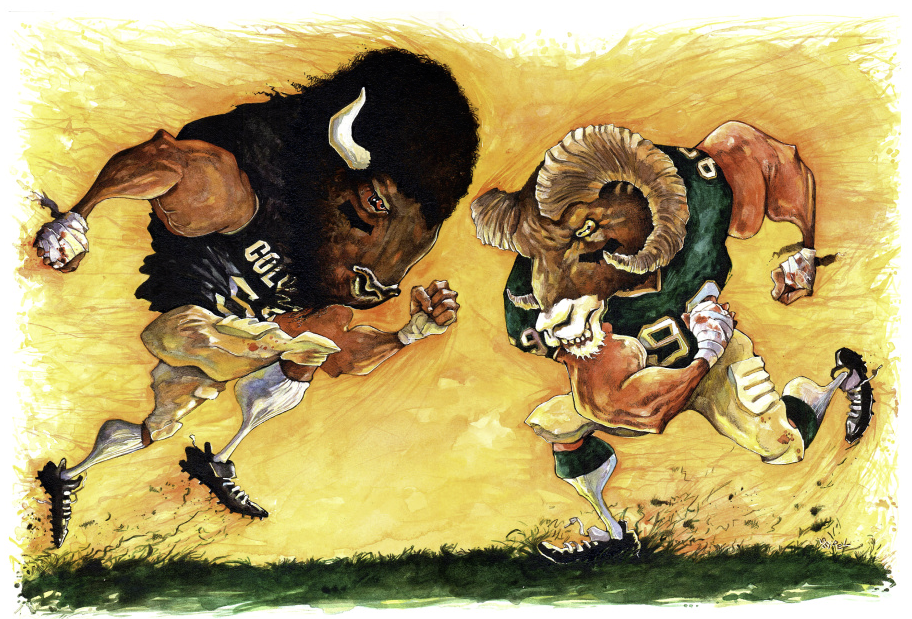|
:©Keith Seidel
Whether from a car accident or a sports related injury from football or soccer, or a chance impact to our heads from a falling rock from above, or us falling and hitting our heads, sustaining a concussion is serious and should not go unnoticed. SYMPTOMS AND EFFECTS According to the Centers for Disease Control and Prevention (CDC), “a concussion is a type of traumatic brain injury (TBI) caused by a bump, blow, or jolt to the head or by a hit to the body that causes the head and brain to move rapidly back and forth.” This jostling can cause your brain to bounce around in your skull, possibly stretching and damaging the cells and tissues. There are a variety of both short-term and long-term effects from concussions and TBIs. Most of the effects of mild TBIs have to do with one or more of the following areas: thinking, sensation, language, and/or emotion. Severe TBIs can result in permanent disability and even death, and are a contributing factor in 30% of injury-related deaths in the U.S. HOW DO YOU KNOW IF YOU HAVE A CONCUSSION? How do we know if someone has a concussion? It can be difficult to diagnose, since many of the signs and symptoms are shared and confused with other conditions. The first question to ask is, “is there a mechanism of injury that would cause a TBI?” In other words, did you see a ball hit someone in the head, or did you see them trip and fall? If you did not actually see the incident, look for other clues like a dented helmet or a cut on the head. If you cannot find any clues to indicate a mechanism of injury that would produce a TBI, look for important signs and symptoms that can help you figure out what is going on. The CDC divides these up into four main categories, with multiple signs and symptoms for a mild TBI under each: THINKING/ REMEMBERING · Loss of consciousness (even briefly) · Difficulty thinking clearly · Feeling slowed down · Difficulty concentrating · Difficulty remembering new information PHYSICAL · Headache · Fuzzy/ blurred vision · Nausea or vomiting · Dizziness · Sensitivity to noise or light · Balance problems · Feeling tired, having no energy EMOTIONAL/ MOOD · Irritability · Sadness · More emotional than normal · Nervousness or anxiety SLEEP · Sleeping more than usual · Sleeping less than usual · Trouble falling asleep Some or even none of these signs or symptoms may appear right away. Others may come on once the person starts physically exerting his or herself more, while still others may not present until much later. According to Dr. Yost, at Full Spectrum Chiropractic in Olympia WA, patients that do not have a loss of consciousness, amnesia or seizures should be monitored for 1 - 2 hours for the signs and symptoms mentioned earlier. Staying off screens like phones ipads etc, and giving your brain some rest is recommended. Dr. Yost further recommends that if signs and symptoms do develop, visit an urgent care facility near you or Emergency room. (this is the same for a patient who has experienced a loss of consciousness, amnesia or seizures). Dr. Yost also recommends that if a patient’s signs and symptoms increase during the minimal exertion needed to travel to an urgent care facility, they should be carried or transported and with increased urgency. Dr. Yost also stresses that, “concussed patients avoid a second traumatic blow and should not self-evacuate via bike or skis or any method involving speed or jolting.” Though it should be noted that there are situations when an immediate, rapid evacuation is necessary. There are some critical danger signs to watch out for that could alert you to the need for a rapid evacuation: · Headache that gets worse and does not go away · Weakness, numbness or decreased coordination · Repeated vomiting or nausea · Slurred speech · The patient looks very drowsy or cannot be woken up · One pupil is a different size than the other · Convulsions or seizures · Unable to recognize people or places · Getting more and more confused/ restless/ agitated · Loss of consciousness some time after the initial injury Dr. Yost emphasizes that a patient who is unresponsive, or is only voice or pain responsive after a blow to the head requires a rapid evacuation and urgent medical attention. Hopefully you will never have, or need to treat someone with, a concussion or TBI. Post-Concussion Syndrome Adults ages 20 through 64 who were diagnosed with a concussion in 2015 were subsequently diagnosed with post-concussion syndrome 15.7 percent of the time, which was a higher rate than ages 10 through 19 at 12.4 percent. Cranial sacral work, acupuncture, and chiropractic care at Full Spectrum Chiropractic pllc are all recommended support for those recovering from a concussion or TBI from an auto accident or sports injury. Key Words: Concussion, TBI, Whiplash, Headache, neck pain, head pain, sports injury, post-concussion syndrome, car accident https://www.fullspectrumchiro.com
0 Comments
Your comment will be posted after it is approved.
Leave a Reply. |
AuthorFull Spectrum of Writers! Archives
April 2024
Categories |

 RSS Feed
RSS Feed